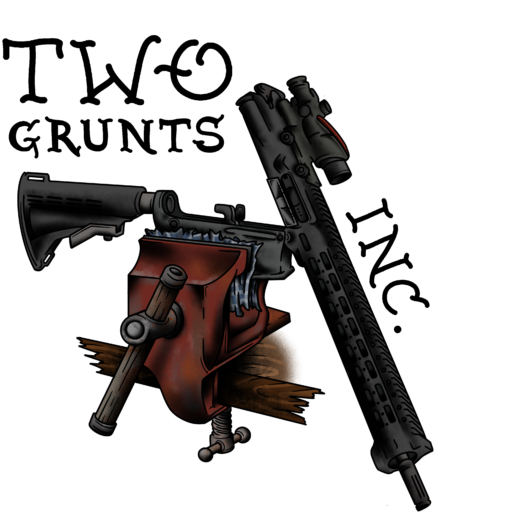Your cart is currently empty!
Pistols: A General Guide
Pistols are a popular type of firearm for personal protection, sport shooting, and home defense. There are two main types of semi-automatic pistols: striker-fired and hammer-fired. In this article, we will provide a general guide on the common semi-automatic pistol, including information on different types of pistols, frames, calibers, and modifications.
Striker-Fired Pistols
Striker-fired pistols are the most common among military and law enforcement personnel. Examples of striker-fired pistols include Glock 17, Glock 19, Sig P320/M17, Smith & Wesson M&P9 Shield M2.0, Smith & Wesson M&P9 M2.0 Compact, and Springfield XDs.
These pistols do not have a hammer present, as the firing pin remains under spring tension internally. The slide is racked and released forward, creating spring tension. The trigger pull releases the pin forward to strike the cartridge/primer, and the cycle of operations repeats this process with each round fired.
Pros of striker-fired pistols include a consistent trigger pull (5.5 lbs standard) and no external safety. These pistols can be used to point and shoot under stress and are lighter due to their polymer frames.
However, striker-fired pistols have cons as well, including no safety- an issue for some, lighter weight means more recoil, and trigger discipline is a high priority at all times – should be noted this should be exercised on all weapons at all times.
Hammer-Fired Pistols
Hammer-fired pistols are the original semi-automatic pistol design. Examples of hammer-fired pistols include the 1911s, Beretta M9, and Sig P226.
These pistols have two modes of operation: single-action and double-action.
In single-action mode, the hammer is manually cocked for the first shot and will manually rearm/cock after each shot. In double-action mode, the hammer can be forward/uncocked and the trigger pull can arm/fire. After the first shot, the hammer will turn to single-action and semi-auto operation.
The Pros of hammer-fired pistols include an external safety, a higher trigger pull weight when the hammer decocked – “safer”, a lighter trigger pull when single-action initiated, and less recoil.
However, the cons include an external safety, a higher trigger pull weight when the hammer is decocked, a lighter trigger pull in single-action which can lead to NDs, and a heavier frame for concealed carrying.
The pros of hammer-fired pistols can also be the cons, it depends on the user’s comfort level.
Frames – Sizes
Pistols come in different frame sizes, which determine the barrel size and capacity of the firearm. The three main frame sizes are full-size, compact, and sub-compact.
A full-size frame has a high ammo capacity, longer barrels for more accuracy and range, and larger pistol grips for a better and more secure grip.
Compact frames have shorter barrels, which makes them easier to conceal carry, but they have less accuracy and range than your full-sized firearms. Compact frames though will usually have a wider frame like your full-sized, allowing them to fit standard-sized magazines, and also allowing them to control recoil when utilizing defense ammunition.
Sub-compact frames have shorter barrels and thinner frames, which makes them popular for concealed carry, but they have higher recoil, and defense (+P) ammo is not recommended for these.
Common Pistol Calibers
Pistols come in different calibers, which determine the size and weight of the bullet (projectile).
The most common pistol calibers are .45 ACP, 9mm Luger, .40 S&W, and .380 Auto. .45 ACP has a velocity of 890 fp/s @ 230 grain and a standard magazine capacity of 8-10 rounds.
9mm Luger has a velocity of 1000 fp/s @ 147 grain and a standard magazine capacity of 15-17 rounds.
.40 S&W has a velocity of 1000 fp/s @ 180 grain and a standard magazine capacity of 13-15 rounds. It is considered a “snappy round” due to a lack of engineering.
.380 Auto has a velocity of 980 fp/s @ 95 grain and a standard magazine capacity of 6 rounds. It is the smallest of all those mentioned, and not recommended by us for defense purposes.
Common Pistol Modifications & Upgrades
Pistols can be modified to improve their performance and functionality. Some of the most common modifications include sights, grips, triggers, and flared magwells.
Sights can be upgraded with RMRs/Red dots for faster target acquisition and better for longer range with pistols. Irons can be upgraded with 3 dot sights, which have two rear and one front sight post, and can be colorized or glow in the dark.
Grips can be modified with stippled/texturized, which helps with grip and retention. Triggers can be upgraded with aftermarket triggers, which can improve the overall performance of the pistol.
Flared magwells can be added to open up magazine wells, which makes for easier and quicker reloads, especially in low-light conditions.
Final Thoughts
Pistols are versatile and popular types of firearms that come in different types, frames, calibers, and modifications. Striker-fired pistols are the most common among military and law enforcement personnel, while hammer-fired pistols are the original semi-automatic pistol design.
Full-size frames have high ammo capacity and longer barrels for more accuracy and range, while compact and sub-compact frames are popular for concealed carry.
Common pistol calibers include .45 ACP, 9mm Luger, .40 S&W, and .380 Auto. Pistols can also be modified with sights, grips, triggers, and flared magwells to improve their performance and functionality.
It’s important to consider your intended use and personal preferences when choosing a pistol.
Be sure to read our other guides here!
